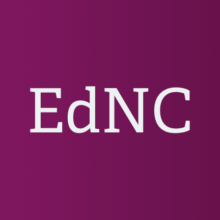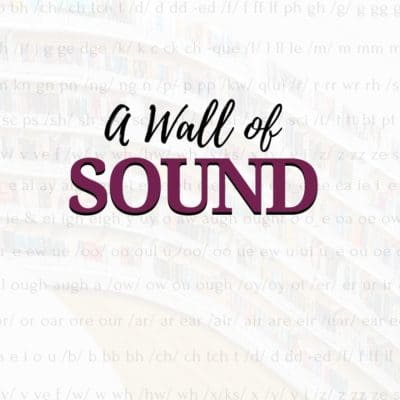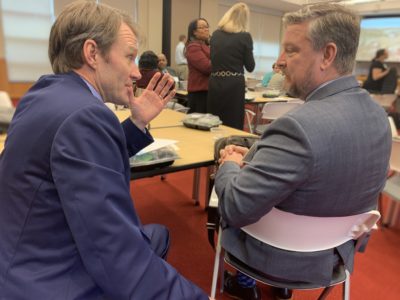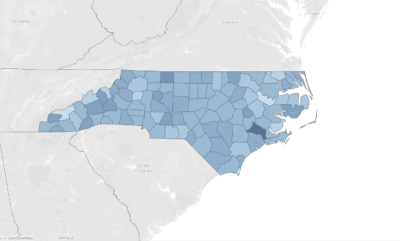
In a recent article on a proposed definition of high-quality reading instruction, we asked readers to leave their thoughts on the topic in a comment box. We also heard directly from stakeholders on social media and via email. Below, you’ll find some of what they said.
EdNC.org received permission from each source to publish their comment alongside their name and title.
“We need scientifically based and direct instruction. We need to assess skills in pre-reading, phonics, and vocabulary, as well as comprehension of what is read to and by students. I worked as a school psychologist in public schools for four decades. No one method of teaching reading works for all students.
I remember the ‘whole reading’ movement that left out phonemic awareness and phonics skills all together. Almost every child who was referred for learning disabilities during that time needed instruction in phonemic awareness and phonics. They were not disabled in reality, but the only way they could get appropriate instruction was to be labeled as needing special education.
Then the pendulum swung to phonics and students who needed visual instruction, sight words, shapes, etc. became ‘disabled.’ Eventually we started the problem solving approach and gave directed instruction to meet these students’ needs.
When I was in elementary school in the 1950s, I was fortunate enough to live in a state in the Midwest. I was bright enough to be able to start kindergarten at age 5. In second grade, I was falling behind in reading. Dick and Jane and sight word instruction did not work for me. My reading was assessed and I was enrolled in after-school phonics instruction.
Without that, I may have not been valedictorian of my high school class. I may not have been able to accomplish what I did academically including a Ph.D. from Duke University. Please reconsider this policy statement and do what is only right for the children of North Carolina.” — Nancy Kreykenbohm, former school psychologist
“We can all agree that the goal of reading instruction is that students can read and comprehend complex texts necessary for postsecondary success. This is where the agreement ends within this definition of high-quality reading instruction. This definition is significantly lacking in providing clear and concise language that guides planning, instructional practices, and selection of curriculum and materials.
With the exception of the phrase “grounded in the science of reading,” this definition would be consistent and supportive of most instructional practices, curriculum, or programs currently used in our schools. It provides little in building an understanding of what the science of reading entails. It deeply saddens me that despite the extensive efforts soliciting stakeholder input and expert reviews, this definition has regressed to something so bland that it is simply words on a page.
Intervention studies have shown that 95% of first grade students can be taught to read at a level that is constrained only by their reasoning and listening comprehension abilities (Moats, 2019). The Simple View of Reading, one of several models that have withstood the test of time and continue to be supported by numerous research studies, tells us that reading comprehension is the product of decoding (accurate and efficient word recognition) and language comprehension.
High-quality reading instruction must encompass both efficient and accurate word recognition and language comprehension. The elements (what we teach) and principles (how we teach) of instruction that underlie these must be spelled out within the definition. These elements include the five areas identified in the 2000 National Reading Report: phonemic awareness, phonics, fluency, vocabulary, and comprehension. Underlying all these elements is the acquisition of language.
While most acknowledge these are critical and essential elements of instruction, the ‘how we teach’ is a significant problem and one that I would argue is at the core of our flat results both within the state and nationally. The most essential principles of instruction that have been consistently supported across of 50 years of scientific reports include systematic and explicit instruction. The definition of high-quality reading instruction must include the elements and principles of instruction, as described in the previous iterations of the definition.
The devastating educational and social consequences of reading failure can and must be prevented. I commend the efforts that are being made to bring about change and end this cycle of failure for so many of our students. A solid definition will be the anchor and foundation of the work ahead. We must get this right. I urge the committee to rethink this definition.” — Lynne Loeser, general and special education consultant
“Quality reading instruction doesn’t always translate into a high reading score. It is all about helping kids make connections to reading. There is an element of magic there. Truly. As an educator you see it … that moment in a child’s eyes when they realize they have the gift of reading and thus transporting themselves to places they can only dream of.
Dr. Seuss said it best when he stated, ‘The more that you read, the more things you will know. The more that you learn, the more places you’ll go.’ When a child finally realizes that they have the power to transport themselves to other places through reading, nothing is ever the same for that child. The magic that takes place while a teacher is helping a student learn how to read cannot be put into legislation because it is different for every child.
High frequency words, phonics, understanding of sentence structure, reading strategies, and the recognition of story elements … all play a part in building a firm foundation in reading, but it’s helping kids find connections to their reading and cultivating the curiosity and true love of them wanting to hold a book in their hands and discover what adventure awaits inside those pages … that is high-quality instruction.” — Lisa Godwin, educator and 2017 North Carolina Teacher of the Year
“I was part of the conversation in February when Foorman was in the room with our subcommittee on educator preparation. We gave a large amount of feedback on an earlier version of the definition of reading and said exactly that — words matter. Unpacking documents and supplemental materials are not enough to supplant a lack in specifics — a more comprehensive and explicit definition is important.
This one is disappointing considering the feedback provided. The task force was not charged with writing a definition of reading, but instead to make recommendations about the preparation and development of literacy teachers. Of course, the two are intricately connected and the committee was enthusiastic about an opportunity to weight in. We have met twice over the last two weeks and will meet again on May 28 in order to finalize our recommendations for the June State Board of Education meeting.” — Dr. Kim Winter, Dean of the College of Education and Allied Professions at Western Carolina University
“We conduct research in education so that we can find out what works and endeavor to improve what transpires in the classroom to benefit the students. Specifics in definitions delineate what has been shown to work. Having a watered down, general definition with those specifics left out is nearly as useless as no definition at all if the point is to direct reading instruction to incorporate strategies known to be positive in developing reading abilities.
Foorman’s definition provides the specific guidance needed to reflect current research. Because the definition includes the word ‘current,’ changes to the definition can be made if need be as research so indicates. I believe a definition with some meat in it makes sense.” — Pat Shane, educational consultant
“As a past president of the international Dyslexia Association, former educator, and now a literacy consultant, I find the current definition not only meaningless but, at best, an injustice to all of your stakeholders. I commend the efforts to reach consensus on a definition to guide educational efforts in North Carolina. But, I cannot accept that this definition ignores the recommendations of experts in the field.
It omits the necessary explanations of characteristics and components that comprise the science of reading. How can this definition positively influence professional preparation, professional development, curriculum decisions, etc. if critical information is missing? How can clear and effective guidelines be developed given the lack of specificity within this definition?
Years of debate and disagreement over the science of reading have yielded too many casualties — the children who did not become proficient readers. Unfortunately, some individuals and organizations continue to claim that their literacy approaches and programs are science-based. Your stakeholders need to know what is and what is not science based.
A general statement will not result in the change needed. It will only result in continued adherence to practices that claim to be but are not effective for all children. Please reconsider the recommendations made by Barbara Foorman, a literacy researcher and leader, and years of evidence on best practices in reading instruction. It’s time to take a stand — put aside competing philosophies and make the necessary changes so that all students can succeed.” — Nancy Hennessy, M.Ed., Literacy Consultant
“The science of reading is clear that there is more than one domain of reading (phonics is necessary but not sufficient). Any version that prioritizes one domain over another does so at the detriment of teachers and learners. If we tip the scale too far, we will have students who can call the words but have no idea what they’re reading (without the oral language, vocabulary, fluency, and comprehension needed to read and make meaning). And what is reading if meaning is not being made? That is certainly not the goal.” — Rebecca Jordan, Assistant Professor in the Department of Reading Education and Special Education at Appalachian State University
“After reading the various versions of the definition of high-quality reading instruction, I urge the State Board of Education to adopt a definition that includes more specificity about the need to instruct students explicitly and systematically. Further, I urge the Board to commit to a definition that is grounded in the current science of reading instruction and to name the instructional domains that will be addressed: language, phonological and phonemic awareness, accurate and efficient word identification, spelling, and comprehension.
If we do not articulate these components and the need for explicit, systematic instruction to achieve these results, we are, in effect, ignoring the type of instruction that will help us improve students’ reading achievement. Why are we afraid to stand behind a research-based definition of reading instruction?! I, for one, am ready for us to move forward and embrace what research says works for all children. I urge you to do the same.” — Kristi Kamada, education consultant
”I strongly encourage the State Board of Education to adopt a rigorous and substantive definition of high-quality reading instruction that INCLUDES the words ‘data-informed,’ ‘systematic explicit phonics,’ and includes the research affirmed domains of literacy including the terms ‘phonological awareness, phonics, spelling, syntax, semantics, and pragmatics.’
Please do not squander the opportunity to highly impact both teacher knowledge and student outcomes by watering down the definition. Our state deserves to be among the nation’s leaders in bringing this information to the forefront of education. Thank you for your consideration. You have done the hard work of bringing Dr. Foorman into the conversation, I urge you to listen thoughtfully to her advice.” — J. Concha Wyatt, educational consultant




